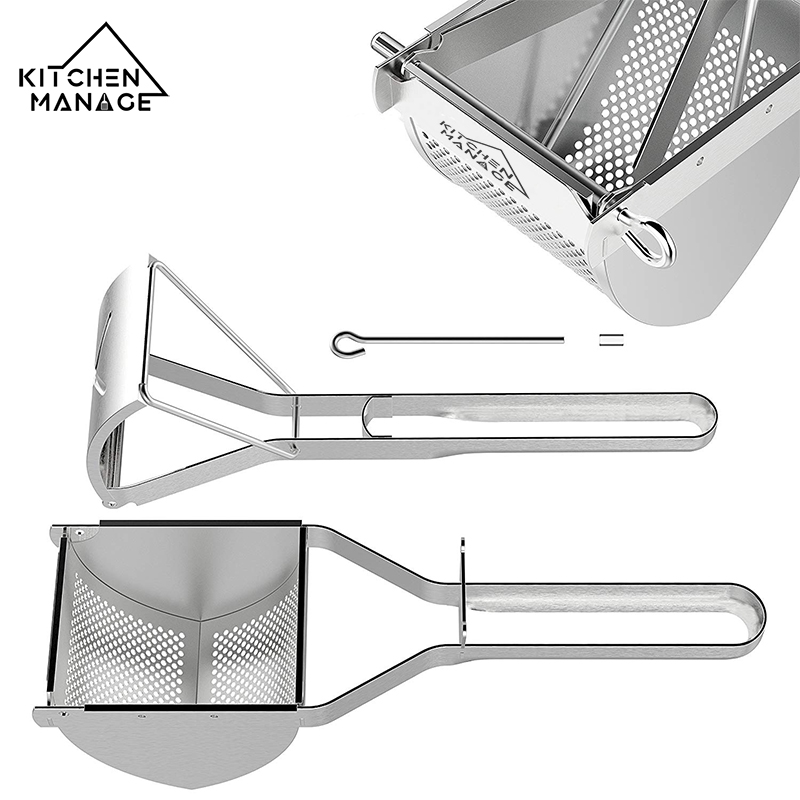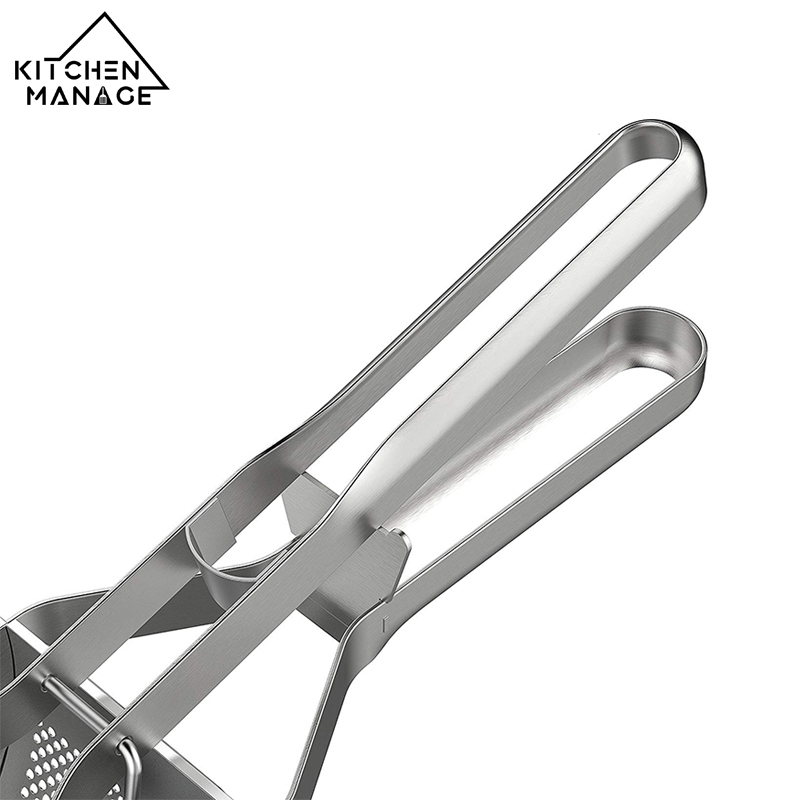In recent years, food mills and ricers have gained popularity among home cooks for their versatility, efficiency, and ability to elevate everyday cooking. These essential Kitchen Tools are transforming the home cooking experience by making food preparation easier, healthier, and more enjoyable. Here’s how food mills and ricers are enhancing home kitchens:
1. Versatility in Food Preparation
Food Mills
· Multiple Uses: Food mills are incredibly versatile, suitable for mashing, pureeing, and straining a variety of foods, including fruits, vegetables, and legumes. They are ideal for making sauces, soups, and baby food.
· Consistency Control: With interchangeable discs, food mills allow cooks to achieve different textures, from smooth purees to coarse sauces, providing flexibility for diverse recipes.
Ricers
· Specialized Tasks: Ricers excel at producing smooth, lump-free mashed potatoes and other vegetables. They can also be used for making ricotta cheese and pressing moisture out of cooked vegetables.
· Ease of Use: Ricers are simple to operate and require less physical effort compared to manual mashing, making them a favorite for preparing soft and creamy dishes.
2. Healthier Cooking
Nutrient Retention
· Minimal Processing: Both food mills and ricers help retain more nutrients compared to other cooking methods. By avoiding excessive heating or blending, these tools preserve the natural flavors and nutritional content of ingredients.
· Reduced Additives: Using a Food Mill or ricer means fewer pre-packaged or processed foods, allowing for a more wholesome and natural diet.
Low-Fat Options
· Homemade Alternatives: Food mills and ricers enable the preparation of homemade sauces, purees, and mashed items without added fats, sugars, or preservatives found in store-bought versions.
3. Time and Effort Savings
Efficiency
· Quick Processing: Food mills and ricers speed up the process of preparing ingredients. For instance, a food mill can quickly turn cooked vegetables into a smooth puree, saving time compared to manual mashing or blending.
· Less Clean-Up: These tools are easy to disassemble and clean, which reduces the overall time spent in the kitchen and simplifies the post-cooking clean-up process.
Convenience
· User-Friendly: Both tools are designed for ease of use, with food mills featuring ergonomic handles and ricers providing straightforward operation, making them accessible for cooks of all skill levels.

4. Enhanced Culinary Creativity
Recipe Development
· Creative Cooking: The ability to control texture and consistency allows for greater creativity in the kitchen. Cooks can experiment with different textures and flavors, from smooth soups to chunky sauces.
· Customizable Dishes: Food mills and ricers facilitate customization of recipes to suit personal preferences or dietary needs, enabling home cooks to create unique dishes.
Traditional and Gourmet Cooking
· Authentic Recipes: These tools are essential for preparing traditional recipes that require specific textures or consistencies, such as homemade sauces and artisanal cheeses.
· Gourmet Dishes: Food mills and ricers are used by professional chefs and home cooks alike to achieve gourmet-quality results in dishes like creamy risottos, silky soups, and smooth sauces.
5. Sustainability and Waste Reduction
Food Waste Management
· Efficient Use of Ingredients: By using food mills and ricers, cooks can utilize every part of fruits and vegetables, reducing food waste and making the most of available ingredients.
· Reusable Tools: Unlike single-use Kitchen Gadgets, food mills and ricers are durable and long-lasting, contributing to a more sustainable kitchen by minimizing the need for disposable products.
Eco-Friendly Cooking
· Reduced Packaging: Preparing foods from scratch with these tools means less reliance on packaged or processed products, leading to less waste and a lower environmental footprint.

6. Improved Texture and Flavor
Better Results
· Smooth Consistency: Food mills and ricers produce superior textures, resulting in smoother, creamier, and more flavorful dishes compared to other methods.
· Enhanced Flavors: By maintaining the natural flavors of ingredients and avoiding over-processing, these tools help create more flavorful and satisfying meals.
Conclusion
Food mills and ricers are increasingly becoming indispensable tools in modern kitchens, significantly enhancing home cooking experiences. Their versatility, efficiency, and ability to produce high-quality textures and flavors offer numerous benefits:
· Versatility: These tools excel in a range of food preparation tasks, from pureeing vegetables to making smooth mashed potatoes. They allow for various textures and consistencies, catering to diverse culinary needs.
· Health Benefits: By facilitating the preparation of fresh, nutrient-rich foods without excess additives, food mills and ricers support healthier cooking practices and contribute to a more wholesome diet.
· Time and Effort Savings: Both tools streamline food preparation processes, reducing the time and effort required to achieve excellent results. Their ease of use and quick cleanup further enhance their convenience.
· Culinary Creativity: Food mills and ricers empower home cooks to explore new recipes and techniques, fostering creativity in the kitchen and allowing for customized, gourmet-quality dishes.
· Sustainability: The efficient use of ingredients and reduced reliance on processed foods contribute to waste reduction and a more sustainable cooking approach.
Overall, food mills and ricers are valuable additions to any kitchen, making food preparation more efficient, enjoyable, and environmentally conscious. Their continued evolution and adoption in home cooking reflect their enduring importance and impact on enhancing the culinary experience.
